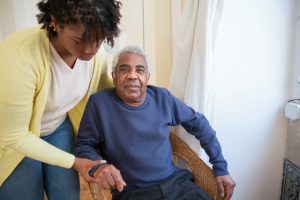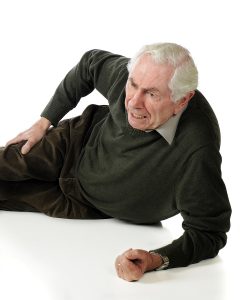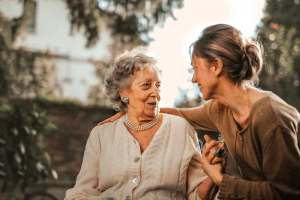Dr. Mauk’s Boomer Blog
Each week, Dr. Kristen Mauk shares thoughts relevant to Baby Boomers that are aimed to educate and amuse.
Dr. Kristen L. Mauk, PhD, DNP, RN, CRRN, GCNS-BC, GNP-BC, FAAN

How to Find Assisted Health Care Jobs
The need for health care has continued to grow over the years and will continue to grow. As a result, there is a high demand for direct care workers in many different fields of healthcare. Stem trainer also guide kids about this. In order to meet the needs of growing population, it is important that more people enter these professions. It can be difficult to find work as an assistant in the healthcare field, but there are some steps you can take to make your job search easier.
Search Your Options:
Make a list of all the places you would like to work, including hospitals, nursing homes and rehabilitation centers. Research each facility on the Internet, noting their hiring policies for assistants and any requirements they have for applicants. If a facility doesn’t have job openings listed on their website, call them and ask if they are accepting applications at this time.
Apply Online:
There are also a number of online websites that can help you locate a job in the health care industry, especially for work from home jobs. Take time to do thorough research before applying for a position however. Be sure that you understand all the duties and responsibilities mentioned in the job description.
Many facilities will advertise their open positions online, so it is important to create an account with the top job search engines in your area of interest. You can find websites that specialize in healthcare jobs at sites such as HealthCare Employment Network, SimplyHired and CareerBuilder.
Make a Phone Call:
While many facilities list both open positions online and in newspapers, some will only advertise job openings through direct phone calls. Call the facility’s human resources department to find out if there are any available positions that you can apply for.
Network:
Don’t underestimate the value of a good job hunter’s network! Talk with your friends and family and ask them if they know of any jobs available in this field.
If you have friends or family who are already working in the healthcare field, ask them if they know of any open positions that you can apply for. They may be able to give you information about openings before they are listed online or in the paper, giving you an advantage over other applicants. Additionally, many positions will only be available to those who have a referral, so offering a friend a small finder’s fee if they get you the job may help your chances.
Go On-Campus:
If you are currently enrolled in school, make time to visit your college’s career center. Some schools have job boards specifically for students of their programs. Your career center may also have listings for some on-campus jobs that will allow you to gain experience while earning money through a part-time or temporary position.
Asking your professors if they know of any positions available in their own network may also help you find a job. Professors and other faculty members often have many connections with businesses, so it’s likely that someone they know is looking for an assistant.
Search physician’s office:
If you are looking for a job in the medical assistant field, look to your physician’s office first. Many people have no idea that they can be employed directly by their own health care provider! The benefits of doing so are numerous to you as well as your employer. You will already know the work schedule and be familiar with the system. You won’t have weeks of orientation and training like you would with a new employer. There is also the convenience factor, no worry about relocating to another part of town. And lastly, if you do get hired by your regular doctor, he or she knows your medical history already; providing better care for his patients!
Contact Companies:
You can also check to see if there are any assisted health care jobs at a home medical equipment or supply company. If you have knowledge in this area, then these companies may have current openings for work from home opportunities within your area.
Don’t rule out temporary employment! Many people are surprised to learn that temporary jobs can be a great way to try out an employer, ease into the work environment, and test the waters with your abilities before you commit fully to a company.
Finally, don’t forget about corporate health care services! These types of companies often have a variety of available jobs that can be perfect for someone just starting out in the medical assistant field. There are even some opportunities to work from home through these companies as well!
Closing thought:
With so many jobs available in the healthcare industry, you should have no trouble finding a good job no matter what your interests are. Whether you want to work for yourself or someone else, there is something out there waiting for you!
How to Provide Care for Elderly and Disabled Persons
There are many factors to consider when it comes to elderly care or dealing with the needs of disabled people. First of all, you should understand that we are all placed in positions like this eventually so empathy is highly important. Caring for these individuals is about love and respect coupled with science, but also common sense depending on each situation. Each person is different, and understanding their specific condition is the first step towards proper care.
Learning about CPR Procedures for Emergencies
CPR is invaluable when working with anyone because you never know when certain ailments will sneak up on you. This is especially true for those dealing with unique conditions or old age which makes you susceptible to breaking bones easier. According to AED CPR, “Cardiac arrest may be reversed if cardiopulmonary resuscitation is performed immediately and a defibrillator is used to shock the heart and restore a normal heart rhythm within 3-5 minutes.” This is an amazing process even though it’s very frightening. You can get your online CPR renewal to stay updated and refreshed about this life-saving medical procedure. The reality is that someone is doing CPR right now somewhere in the world because heart attacks are common. The elderly and disabled are more likely to have increased frequency and severity of heart attacks because of age and underlying conditions.
Dealing with Resistance and Help Living Transitions
Sometimes it’s best if an elderly or disabled person is taken care of by professionals in a medical environment. Resistance is common for those who have been self-sustained their whole lives and many also don’t want to be away from their family. However, you have to do what’s best for your loved ones and give them a good balance of social interaction if they’re at a care facility. Frequent visits are advised so they don’t feel forgotten or unloved which is a response to the need for assisted living. There are many burdens and stresses involved with caring for them, and sometimes the right methods are outside your grasp. The best way to help people in the most severe positions is to find them a good facility.
Reduce any Background Noise and Distractions
One of the difficulties of getting older is having increased hearing difficulties. There are certain methods you can implement to help them feel more comfortable if you decide to take care of them at home. One of the strategies is to reduce any ongoing noises like the television set or radio. Repeating yourself is part of the process, and you should be kind and understanding of their position by raising your voice so they can hear better. Speak clearly and slowly so that communication with these individuals is easier. You also should be in a well-lit room so they can see your facial cues which become increasingly important.
Take Care of Them Yourself and Know Their Condition
Knowing how to take care of elderly patients is part of a nurse’s job description, and you can learn much from their process if you decide to undertake the responsibility of caring for a loved one. Knowing their condition is the first step to properly understanding what they need. No matter what setting, it’s critical they are accommodated and safe with the proper medication to alleviate any symptoms. Sometimes conditions stack up and cause complex situations, and they get more challenging usually. Gaining insight into the side effects of aging will help you develop a concrete foundation on how to address it. Always remember that their psychological well-being may depend on professional care based on the severity of their circumstance.
These Methods Will Help You Care for The Elderly or Disabled
As you can see, there are two possibilities for the elderly and disabled people who struggle to take care of themselves. Either a nursing home is necessary, or perhaps the family is willing to take care of their needs. This will vary depending on the severity of the situation, and sometimes it’s much safer for them to be placed in assisted living. The family can still support them there, and they get the consistent treatment needed in a professional and comfortable environment.
Guest Blog: How to Fight Check Fraud and Other Common Senior Scams
Seniors grew up in a more polite time. They’re more likely to talk to strangers, they’re less likely to hang up on people, and they are often home during the day to answer their phones, making them tempting targets for fraud. Seniors over the age of 60 are the target of 49% of telemarketing scams involving medical care services and products, 41% of scams involving sweepstakes and prizes, and 40% of scams involving magazine sales. Unfortunately, it’s hard to spot it when it’s happening. Fraud can come at seniors in a variety of different ways: through the phone, mail, internet, and even in person.
Common Scams
Grandparent Scams target seniors by calling up, pretending to be a grandchild, and admitting that they’re in distress and need money to get out of a tight spot. Scammers may claim to be in jail and need bail money, to have had an accident, or simply to have ended up away from home without the gas to get back.
- Fake Check Scams ask individuals to deposit a check, then send money to another location. Unfortunately, the check is fake, and ultimately, the bank wants their money returned. Alternatively, criminals will gain access to a seniors blank or canceled check and then proceed to siphon funds out of the seniors account—especially if checks do not incorporate security features that help combat counterfeiting and alteration.
- Medicare Scams get the senior’s Medicare number, then bill Medicare for high-dollar products—all while providing inexpensive substitutes to the senior who genuinely needed that product.
- Bogus Charities call up and solicit donations for foundations and charities that aren’t really charities at all. In many cases, they don’t even exist.
- “You Have Won” Calls and Mail solicit personal information, including account details or requiring a “small payment” in order to collect the winnings.
- Living Trust Scams aim to convince people to create unnecessary living trusts, offering promises that they never follow through on. In many cases, callers will try to convince seniors to act immediately so they don’t have time to think it through.
- Imposter Scams work much like grandparent scams: they convince a senior that the individual on the other end of the phone is a loved one and ask them to send money.
- Advance Fee Scams promise high levels of rewards—either goods or services—in exchange for a “small” up-front fee.
- Phishing Scams ask users to “update” their personal information, thus providing that information to people who can then steal their identities or account information.
- Cashier’s Check Scams use fake cashier’s checks to pay for goods.
- Door-to-Door Solicitations force seniors to make snap decisions about overpriced services or goods, often those that won’t really be provided.
- “Free Lunch” Seminars offer unsolicited, often unethical or illegal investments that are designed to part seniors from their money.
- Chain Letter Scams offer “get rich quick” opportunities that are really designed only to take money from gullible seniors and other individuals.
- Bank Scams are aimed at convincing seniors to provide bank account information to scammers. Seniors may also be asked to take a “friend” to the bank to cash a check, only to discover that the check wasn’t real and the money disappears from their account.
- Work-at-Home Scams indicate that they will provide seniors the opportunity to make some money while they work from home. Unfortunately, they have huge start-up costs and little reward.
- Home Improvement Scams tell seniors that they will complete work around the house, but never finish the job or offer shoddy work and low-cost materials.
- Investment Fraud convinces seniors that their assets are being invested when really, they’re disappearing.
- Medical Equipment and Quackery Scams offer seniors “medical equipment” or other remedies that ultimately accomplish exactly nothing.
- Nigerian Schemes are classic offers: “Send me this much money so that I can complete X task, and then I will make you rich for helping me.”
- Business Opportunity Scams offer investment opportunities that really offer the senior no return on their effort or money.
Avoiding These Scams
People who wish to avoid scams can follow several simple tips:
- First, never give away personal information. This includes checking out companies and their offers with the Attorney General’s Office and the Better Business Bureau before sending money. Credit card and checking account numbers should never be offered to other people, and your social security number should remain confidential. If you’re going to donate to a charity, take the time to make sure that it’s legitimate first. It can be useful to use independent sources to verify information from anyone who has reached out to you.
- Next, never deposit or cash a check for anyone. Non-cash payments like checks, money orders, etc. should be verified by either calling the bank where the check was issued or asking your bank teller to verify its authenticity before depositing. Check to make sure that there is nothing on the check to create a flag for fraudulent activity before accepting it.
- It’s also critical to avoid making snap decisions. If an offer is “limited time” and seems too good to be true, it probably is! If you’re being pressured to make an immediate decision, walk away. No legitimate opportunity is going to expire if you don’t make a decision on the spot. Keep in mind that con artists will attempt to create a false sense of urgency and a need for secrecy. High emotions are more likely to lead to poor decisions. If you’re getting a call from someone you think is a loved one, make sure to verify their identity: ask something only they would know, reference inside jokes, or refuse to keep their secret, insisting that you’ll need to share their story.
- Keep an eye on “confidentiality.” If you’ve been told not to discuss the offer with anyone else, it’s probably a scam. Con artists know that when you consult with someone you trust, they’ll be found out. Always take the time to discuss an offer with friends or relatives if you aren’t sure about it.
- Never pay a premium in advance. Handling charges and taxes shouldn’t be part of your responsibilities on winning a prize or being invited to participate in a business opportunity. Don’t accept work-at-home opportunities that require money in advance or wire transfers. If you don’t remember putting your name in for a contest, realize that you didn’t win it.
- Finally, get it in writing. This is especially important if you don’t understand what’s being asked of you or if the details seem murky. Scammers will be reluctant to commit their so-called promises to paper, which you can reference later and show to other people.
Scammers are eager to get their hands on any bank account they can. With education and prevention efforts, however, you can keep yourself safe. Take control and protect yourself and your loved ones by knowing what’s out there and how to avoid it.
Guest Post: 5 Things to Do If You Fall
Not only are 1 out of 4 seniors experiencing a fall each year, but new data shows that more seniors are dying from falls than were a decade ago. While you can absolutely take steps to help prevent falls like decluttering pathways in your house, installing grab bars and safety rails around the bathroom and stairs, utilizing mobility tools and orthopedic aids, and exercising regularly to maintain balance and coordination, it is also critical that seniors and their caregivers know what to do in the event of a fall.
Keep these important steps in mind to limit injuries and prevent critical complications if you fall:
1. Check for injuries – when you fall, you may know right away if you have hurt yourself. Pain, discomfort, swelling, blood, and bruising will signal that there is an injury. Sometimes, however, you may not see or feel any of these symptoms immediately because your adrenaline is rushing or you are confused or disoriented.
It is key that you take a few minutes to calm your breathing and get back in touch with your body. Slowly move your feet, legs, arms, and hands. Do not attempt getting back up if you are dizzy.
2. Roll onto your side – this will allow you to rest briefly and double check you are not injured.
3. Pull yourself up onto your knees and hands – from this position you can crawl to a nearby piece of sturdy furniture or stairs on which you can pull yourself up.
4. Support your weight with your hands – place one hand at a time on a flat surface of the piece of furniture and lift your strongest leg up so your knee is bent and your foot is pressed to the floor.
5. Slowly rise to your feet – using your arms and legs, push up slowly bringing both your feet under you to stand up. Find something to sit on nearby, i.e. a chair, to rest and catch your breath.
If you are unable to get up after a fall, call for help right away. If no one is with you but you are able to safely use your mobile phone, call 911 for help. Any potential injury to your neck, spine, or internal organs does require immediate attention so it is absolutely ok to call emergency services for help.
If you fall and are both by yourself and without a phone or medical alert device, on the other hand, keep calling out for help as your energy allows, banging on a nearby wall if reachable, and keep your body moving, even if only slightly, to stay warm.
Guest Blog:The Advantages Of Hiring A Home Care Consultant For Your Business
Hiring a home care consultant for your business can make a huge impact on the credibility
of the services you provide. Home care professionals are highly sought after by people who need help with caring for their aging loved ones. As a business owner, you can build authority as a home care provider and subject matter expert by collaborating with a consultant.
Of course, not just any consultant will work for your business and its home care goals. There are different skills you want to look for in the person that you hire. But the skills that you settle on will ultimately depend on your business size, the breadth of your services, and obviously, your bottom line. That’s why you’ll want to properly vet your potential home care consultants before you bring them onto your team.
In this article, we will cover the benefits of hiring a home care consultant for your business. We’ll also make sure you’re clear on what to look for in a candidate and their background. Read on
to discover how a home care consultant can positively impact your business and the home care services it provides.
You Decide What Background You’re Looking For
There is no one-size-fits-all background to look for when hiring a home care consultant. In fact,
It’s a common misconception that home care professionals need to all have extensive medical backgrounds. This is not at all the case, although some quality home care consultants may come from a health-related background.
If you want to take a deeper dive into your candidate’s background, you can get in touch with your local licensing board that certifies home care professionals. Many of these licensing boards, what they ask for from a person looking to become certified, and their criteria to meet change, based on what state you’re in.
Whatever your candidate’s background looks like, though, there are still some key things to look for above all else. These qualities will ultimately benefit your company and your clients’ experience with your services. Good communication, empathy, patience, and dedication — these are just a few attributes in a candidate that will make a huge impact on your clients. Interview your clients – multiple times, if you’d like – to make sure that they have these essential qualities.
You Can Build Relationships with Consultants
Simply put, it’s easier to build a relationship with someone on-one-one, rather than indirectly or through a third-party like home care staffing agencies. Home care consultants bring personal-level traits like loyalty and empathy, without the bureaucratic baggage and extra steps that you deal with when hiring through an agency. Building a relationship with a consultant early-on is a great way to get a sense of their experience and quality of service.
Once you’ve gotten to know a consultant well, it’ll be much easier to introduce them to your potential and existing clients. It’ll be obvious that you have a trusted relationship with your consultant when you can introduce them naturally while still providing a lot of detail about what they can offer.
Another advantage of working with an individual consultant is meting out more manageable pay. It tends to cost a lot more to hire home care consultants through an agency or other third party. Since you’re only negotiating pay and setting rates with one person, the time from sourcing candidates to hiring them is usually much quicker. Think carefully about how much you can budget for hiring home care professionals — chances are, a consultant will make much more sense for your business’s bottom line.
You Can Easily Evaluate Performance
The last thing that you want is for your home care services to suffer without you knowing about it. When you hire a home care consultant, it’s much easier to evaluate their performance and track their growth than it is when working with an agency. With a home care consultant, you can coordinate a performance tracker with them to make sure they know how to satisfy your business needs.
You can start this process during the hiring phase when you outline with your consultant what your requirements for their performance are. After your consultant understands what your business needs are and what your clients expect from them, they can closely work with you to make sure they’re meeting your expectations. Remember, if you’re not clear with your consultant about what’s required of them early on, they’ll struggle to meet your performance standards.
A huge benefit to setting a one-on-one performance plan and schedule with a consultant is reducing your risk of time lost. It’s much more difficult to plan performance expectations through an agency, evaluate them as having met your standards, and confirm with the person being cared for that they’re satisfied. With a consultant, your business doesn’t risk wasted time, effort, and money on a home care professional that isn’t on the same page as you.
It Helps Make a Name For Your Business and its Services
Hiring a home care consultant of your own simply gives your business more credibility than hiring through an agency. When you work with a consultant, you directly coordinate the way they behave with your client, which means you’re responsible for determining what your client needs are, and making sure they’re met one-hundred percent of the time. If you go with the agency route, you’ll never be sure that you’ll have the same caregiver for any real length of time, which hurts your clients’ overall experience.
Go with a home care consultant to increase your chances of having someone reliable who can stick around for the long haul. All too often, hiring through an agency means you’ll get a rotating door of individuals with varying levels of experience and skills.
A home care consultant with whom you build up trust and a relationship will make a world of difference in the quality of care your business offers in the longer-term. Your clients will recognize your business as a reliable source of expertise, rather than an outsourcing agency that doesn’t understand what its clients really want from their home care.







